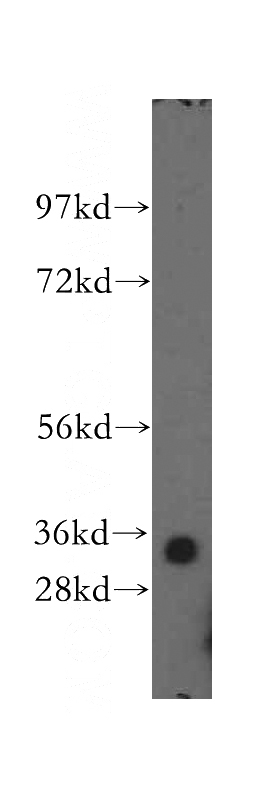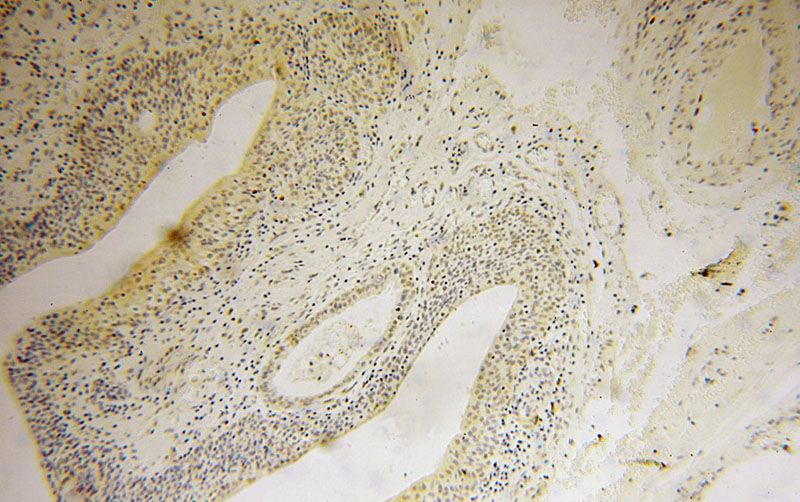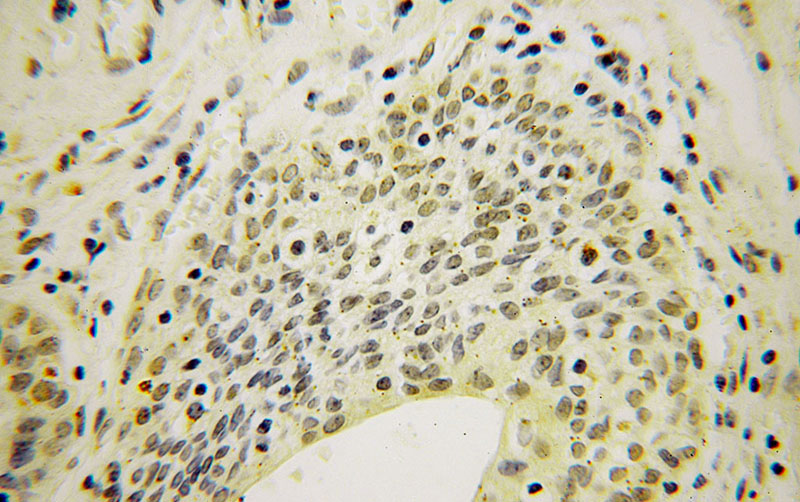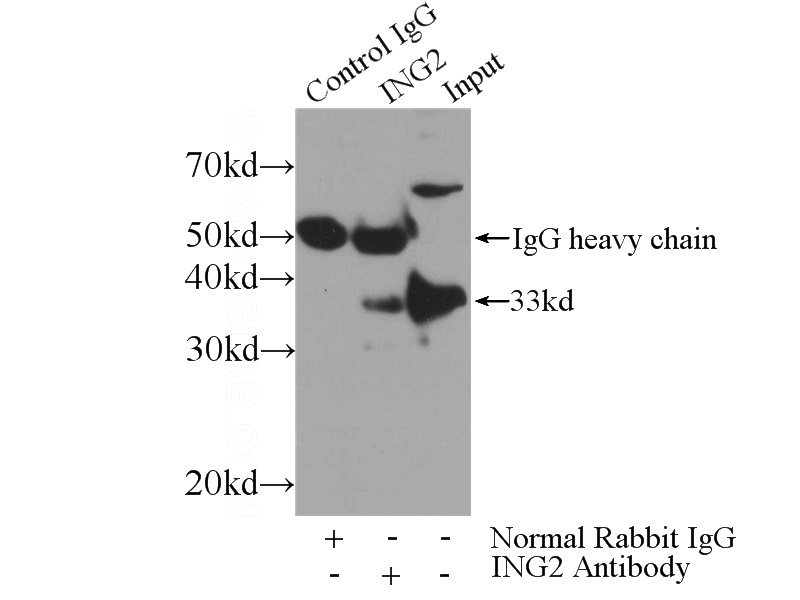-
Product Name
ING2 antibody
- Documents
-
Description
ING2 Rabbit Polyclonal antibody. Positive WB detected in HEK-293 cells, human liver tissue. Positive IP detected in HEK-293 cells. Positive IHC detected in human colon cancer tissue, human cervical cancer tissue. Observed molecular weight by Western-blot: 33kd
-
Tested applications
ELISA, WB, IHC, IP
-
Species reactivity
Human,Mouse,Rat; other species not tested.
-
Alternative names
ING1L antibody; ING1Lp antibody; ING2 antibody; Inhibitor of growth protein 2 antibody; p32 antibody; p33ING2 antibody
-
Isotype
Rabbit IgG
-
Preparation
This antibody was obtained by immunization of ING2 recombinant protein (Accession Number: NM_001564). Purification method: Antigen affinity purified.
-
Clonality
Polyclonal
-
Formulation
PBS with 0.1% sodium azide and 50% glycerol pH 7.3.
-
Storage instructions
Store at -20℃. DO NOT ALIQUOT
-
Applications
Recommended Dilution:
WB: 1:200-1:2000
IP: 1:200-1:2000
IHC: 1:20-1:200
-
Validations

HEK-293 cells were subjected to SDS PAGE followed by western blot with Catalog No:111792(ING2 antibody) at dilution of 1:400

Immunohistochemical of paraffin-embedded human colon cancer using Catalog No:111792(ING2 antibody) at dilution of 1:50 (under 10x lens)

Immunohistochemical of paraffin-embedded human colon cancer using Catalog No:111792(ING2 antibody) at dilution of 1:50 (under 40x lens)

IP Result of anti-ING2 (IP:Catalog No:111792, 3ug; Detection:Catalog No:111792 1:500) with HEK-293 cells lysate 1000ug.
-
Background
ING2, also named as ING1L, belongs to the ING family and contains a PHD-type zinc finger. It is induced by the DNA-damaging agents etoposide and neocarzinostatin. As a candidate tumor suppressor, ING2 seems to be involved in p53/TP53 activation and p53/TP53-dependent apoptotic pathways, probably by enhancing acetylation of p53/TP53. It is a component of a mSin3A-like corepressor complex, which is probably involved in deacetylation of nucleosomal histones. Recent finding reported that ING2 regulates muscle differentiation by regulating chormatin remodeling program. Catalog#11560-1-AP is a rabbit polyclonal antibody raised against full length ING2 of human origin.
-
References
- Smith KT, Martin-Brown SA, Florens L, Washburn MP, Workman JL. Deacetylase inhibitors dissociate the histone-targeting ING2 subunit from the Sin3 complex. Chemistry & biology. 17(1):65-74. 2010.
- Eapen SA, Netherton SJ, Sarker KP. Identification of a novel function for the chromatin remodeling protein ING2 in muscle differentiation. PloS one. 7(7):e40684. 2012.
- Smith KT, Sardiu ME, Martin-Brown SA. Human family with sequence similarity 60 member A (FAM60A) protein: a new subunit of the Sin3 deacetylase complex. Molecular & cellular proteomics : MCP. 11(12):1815-28. 2012.
- Zhong J, Yang L, Liu N, Zheng J, Lin CY. Knockdown of inhibitor of growth protein 2 inhibits cell invasion and enhances chemosensitivity to 5-FU in human gastric cancer cells. Digestive diseases and sciences. 58(11):3189-97. 2013.
- Zhang HK, Pan K, Wang H. Decreased expression of ING2 gene and its clinicopathological significance in hepatocellular carcinoma. Cancer letters. 261(2):183-92. 2008.
Related Products / Services
Please note: All products are "FOR RESEARCH USE ONLY AND ARE NOT INTENDED FOR DIAGNOSTIC OR THERAPEUTIC USE"
